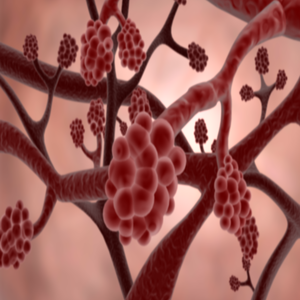Memory and Emotion

Your humble reporter has had more than his fair share of major life events. As a sixteen year old I was a passenger in car that had a meeting with another vehicle driving down the wrong side of the road. This was in England, where folk always do drive on the “wrong” side, but the fellow who was kind enough to arrange the collision could never explain why he was driving on the “American” side.
The interesting thing is that the memory of the crash is seared into my memory: I can remember the license plate of the vehicle that hit us. Some people call that a “flashbulb memory.”
If you live in the United States you probably have clear and fairly accurate memories of where you were and what you were doing on September 11th 2001.
This kind of experience is not uncommon: most of us have noticed that events that occur during heightened states of emotional arousal, such as fear, anger, happiness and sex are far more memorable than less dramatic occurrences. The emotional “load” of an event is a key factor in remembering it. Previous studies have confirmed that heightened states of emotion can facilitate learning and memory.
This makes good evolutionary sense: emotionally charged events are likely to be the ones that we need to remember. From an evolutionary perspective, it is more important to remember where Mr. Saber-tooth Tiger lives, rather than the names of the Kings and Queens of England.
Therefore the regions of the brain that are responsible for the storage of memories need to distinguish between important experiences and those that less significant for survival. The brain must have some mechanisms for giving priority to emotionally charged memories, so that they are converted and stored in long-term memory.
The downside is that in some situations, for instance posttraumatic stress disorder (PTSD), this process can become pathological and people can be tormented by persistent vivid memories of traumatic events.
Writing in the journal Cell, researchers from Johns Hopkins University and their collaborators at Cold Spring Harbor Laboratory and New York University may have identified the biological basis for this phenomenon. Memories in the brain are held in neurological circuits and each new experience creates a new circuit. The investigators have found that the hormone norepinephrine, which is released during emotional arousal, serves to “prime” nerve cells to remember events. They do this by increasing the neurons’ chemical sensitivity at the precise sites where nerves rewire to form new memory circuits.
Norepinephrine is often described as one of the “fight or flight” hormones and it is likely also involved in the third type of response to a threat, which is “freeze.” In the brain norepinephrine energizes the circuit-building process by adding phosphate molecules to a nerve cell receptor called GluR1. The phosphates help guide the receptors to insert themselves next to a synapse.
So when the emotionally-charged brain needs to form a memory, the nerves have plenty of available receptors to quickly adjust the strength of the connection and lock that memory into place.
The researchers targeted the GluR1 receptor after discovering that if it is disrupted in mice, the little creatures develop spatial memory defects. They tested the idea by either injecting healthy mice with adrenaline or exposing them to fox urine, both of which increase norepinephrine levels in the brain.
They then analyzed the brains of the mice and found increased phosphates on the GluR1 receptors and an increased ability of these receptors to be recruited to synapses.
When the researchers put mice in a cage, gave a mild shock, took them out of that cage and put them back in it the next day, mice who had received adrenaline or fox urine were likely to “freeze” in fear, compared with mice who had not been exposed to the adrenaline or fox pee. This implies an enhancement of their memory of the cage and its unpleasant associations.
In a similar experiment with mice genetically engineered to have a defective GluR1 receptor, adrenaline injections had no effect on mouse memory. So this provides us with further evidence of the “priming” effect of norepinephrine on the receptor.
There has been a lot of recent interest in using medications like beta-adrenoreceptor blocker propranolol – which prevents some of the actions of norepinephrine – to prevent the development of PTSD in people who have been exposed to extreme trauma, and this research may provide the scientific basis for this kind of therapy.
On the other hand, this research leads me to predict that people with overactive GluR1 receptors may be constantly curious about their environment, but also likely to be chronically anxious and more likely to develop PTSD.
We have known for years that propranolol and other beta-blockers may attenuate some of the physical symptoms associated with anxiety. Most people had assumed that the medicine worked by reducing heart rate, shaking and sweating. But experienced clinicians usually find that beta blockers that cross the blood/brain barrier work best, and it may well be that these drugs also have direct actions in the brain itself.
“Recollection is the only paradise from which we cannot be turned out.”
–John Paul (a.k.a. Johann Paul Friedrich Richter, German Novelist and Humorist, 1763-1825)
“The existence of forgetting has never been proved: We only know that some things don’t come to mind when we want them.”
–Friedrich Wilhelm Nietzsche (German Philosopher, 1844-1900)
“The moment we find the reason behind an emotion … the wall is breached, and the positive memories it has kept from us return too. That’s why it pays to ask those painful questions. The answers can set you free.”
–Gloria Steinem (American Feminist, Political Activist and Editor, 1934-)
A New Treatment for Alcohol Dependence?

Several news outlets have today picked up on an apparently odd report: topiramate, a medicine used for migraine and seizures, may also help some people who are alcohol dependent.
A 14-week multicenter clinical trial was orchestrated by researchers at the University of Virginia, and published today in the Journal of the American Medical Association.
371 male and female alcoholics, all of whom were drinking heavily at the time of entering the trial, were randomly selected to take topiramate (up to 300 mg/day) or placebo. All of them had a weekly 15-minute intervention with a trained nurse to enhance adherence to the medication and treatment regimen.
Trials of people with substance abuse are always complicated by high non-compliance rates. Some studies skew their results by making the questionable assumption that if someone doesn’t show up, then they must be cured! This study was structured more realistically: dropouts were assumed to have relapsed to their baseline drinking level.
Even when the dropouts were included, topiramate lowered the percentage of heavy drinking days (the number of days in which men consumed ≥5 drinks/day and women drank ≥4 drinks/day, divided by the number of study days) by a mean of 8.44% more than placebo. The topiramate group showed a reduction from 82% to a mean of 44% heavy drinking days during the 14 weeks, while the placebo group had a reduction from 82% to a mean of 52% heavy drinking days.
In a second analysis that tested the study hypothesis for all randomized participants who took at least one study medication dose and had at least one double-blind site visit, topiramate was much more efficacious than placebo, lowering the percentage of heavy drinking days by a mean of 16.19% more than placebo.
Topiramate was more efficacious than placebo, on measures of self-reported drinking and the liver enzyme gamma-glutamyltransferase, which is a sensitive marker of alcohol consumption.
There are some good reasons why topiramate may be helpful: it acts on gamma-aminobutyric acid receptors in the brain, which have been implicated in some addictive behaviors, including over-eating.
A few years ago topiramate was being examined as a possible weight loss agent, since it has effects on feeding and on metabolism.
The trials have been suspended in North America, primarily because of one of the main side effects of topiramate: it may cause cognitive dulling and word finding difficulties in some people. Those side effects sometimes take a few weeks to develop.
A second point is that when it is used for weight management, some people quickly develop tolerance to its effects.
This new study is interesting and may turn out to be very important. We shall have to see whether the effect on alcoholics is robust and sustained over time.
“All excess is ill, but drunkenness is of the worst sort. It spoils health, dismounts the mind, and unmans men. It reveals secrets, is quarrelsome, lascivious, impudent, dangerous and bad.”
–William Penn (English Quaker, Colonizer in America and Founder of Pennsylvania, 1644-1718)
“One reason I don’t drink is that I want to know when I am having a good time.”
–Nancy Lady Astor (American-born British Politician, 1879-1964)
“Hide our ignorance as we will, an evening of wine soon reveals it.”
–Heraclitus (Greek Philosopher, c.540-480 B.C.E.)
“Where the drink goes in, there the wit goes out.”
–George Herbert (English Religious Poet, 1593-1633)
More Clues to the Biology of Alzheimer’s Disease

Alzheimer’s disease remains a puzzle.
Although there are plenty of people who claim that “The Cause” of Alzheimer’s is… and here you can take your pick of three-dozen theories.
The truth of the matter is that simple explanations – Aluminum, lead, stress, pollution, mycoplasma infections and the rest – fail to explain many of the established observations about the causes of the disease.
From what we know about the genes in the brain, it is highly likely that “Alzheimer’s disease” represents a group of disorders that follow an interaction of sets of genetic and environmental factors.
This notion is supported by a report from investigators at Washington University School of Medicine, St. Louis and several other prominent research centers. The study is published in today’s issue of the journal Neuron and indicates that there a biological link between a protein mutation that causes early-onset Alzheimer’s disease (AD) and a gene variant linked to late-onset AD.
The investigators tried to link the function of two known causative factors in AD. Mutations in amyloid precursor protein (APP) cause early-onset Alzheimer’s disease (AD), but
the only genetic risk factor for late-onset AD is the ɛ4 allele of apolipoprotein E (apoE), a major carrier of cholesterol in the circulation and in cell membranes.
Previous research has shown that mutations in APP can cause early-onset AD when the protein is “cleaved” or split, producing a short toxic protein that builds up in the brain and kills neurons.
In their experiments with mice and cultured mouse cells, the researchers linked APP to the regulation of apoE and its cholesterol transport function. They found that the normal cleavage of APP in the cell gives rise to a nontoxic fragment (called AICD) that suppresses the gene that produces the cell receptor for apoE, known as LRP1. Crouching in nerve cell membranes, this receptor enables the apoE protein to transport its cholesterol cargo into the cell.
The researchers speculated that the loss of LRP1 function in AD might cause a loss of cholesterol that causes malfunction of neurons.
These observations may turn out to be extremely important. If we can restore the activity of the receptor gene, we might have a new treatment strategy for AD.
Protecting Yourself Against Alzheimer’s Disease

I have a keen interest in healthy aging, and we have talked before about some of the strategies that can help protect you against developing cognitive decline.
New research now shows for the first time that, of all lifelong activities, only a high level of mental or cognitive activity protects against the devastating memory loss of Alzheimer’s disease. High levels of social or physical activity are not enough.
Researchers from the Byrd Alzheimer’s Institute bred mice that are genetically predisposed to developing the pathological changes of Alzheimer’s diseases in their brains.
They then kept the mice in one of four housing environments — high social activity, high physical activity, high cognitive activity, or a single housing control environment and watched them from young adulthood through old age.
When the researchers tested the mice in a battery of memory tasks in old age, only the mice given a lifelong high level of cognitive activity were protected against memory impairment. In fact, these “high cognitive activity” mice performed as well as normal mice that do not develop Alzheimer’s disease. However the Alzheimer’s mice raised in one of the other three environments performed poorly in multiple memory tasks.
Not only was memory protected in Alzheimer’s mice by a high level of cognitive activity, but also brain levels of the abnormal protein beta-amyloid were substantially reduced. This protein, thought to be key for Alzheimer’s development, remained at soaring levels in the brains of Alzheimer’s mice raised in social or physical activity environments. Moreover, the researchers found that only the Alzheimer’s mice raised with high cognitive activity had an increase in connections between brain cells. Alzheimer’s mice raised in one of the other three housing environments had much fewer connections between their brain cells.
The new study is published in the Neurobiology of Learning and Memory Journal.
The lead researcher is Gary Arendash, and he had this to say:
“Our results call into question the earlier human studies suggesting social or physical activity provides protection against Alzheimer’s. Alzheimer’s begins in the brain several decades before any symptoms´ show up. That means adults in their forties and fifties need to make lifestyle choices now to decrease their risk of getting Alzheimer’s disease later.”
This is all correct, but there is still an important question: can we really extrapolate from mice to humans? Mice are social creatures, but not to the same extent as humans beings. The lion’s share of the human brain is dedicated to social activities, so you would expect that social activities will be particularly important in the maintenance of the human brain.
An Antibiotic to Treat Stroke

It is fascinating to see a medicine or a therapy that is used for one thing being applied in a completely different area. A good example is thalidomide, a drug that was introduced in 1957 to treat morning sickness. It was pulled from the market because it could cause terrible fetal malformations. Years later it was discovered that it could be very helpful in the treatment of multiple myeloma, leprosy and Behcet’s disease.
Now a new study has shown that people treated with the antibiotic minocycline within six to 24 hours after a stroke (cerebrovascular accident) had significantly fewer disabilities.
In the study 152 men and women received either an oral dose of minocycline or placebo for five days following stroke. People who received minocycline were treated on average within 13 hours of the onset of the stroke compared to 12 hours for the placebo group. Patients were followed up for three months.
People treated with minocycline had significantly better outcomes than those treated with placebo. By three months, the minocycline group performed four times better than the placebo group on the National Institutes of Health Stroke Scale, which measures vision, facial palsy, movement, and speaking ability.
Minocycline appears to be neuroprotective and to prevent programmed cell death or apoptosis.
This could turn out to be very important because current stroke treatments only work during the first few hours after the onset of symptoms, and many people do not get to the hospital in time to be treated.
Alzheimer’s Disease: Diabetes of the Third Kind?

Insulin may have some extremely important roles in the mind as well as the body.
Though best known for its role in promoting glucose uptake into cells, insulin has at least five hundred known functions in the human body. For many years nobody was sure whether insulin was important to the brain: neurons in the brain are unusual in that they do not need insulin to enter them. But then we discovered that insulin acts on other important metabolic processes in neurons. In the brain it also does duty as a chemical messenger and as a growth factor, and brain insulin signaling is crucial for the creation of memory. Over the years a number of theorists have suggested that some neurological and psychiatric illnesses could be a result of disturbances in insulin-related processes in the brain.
It is now beginning to look as if they may have been correct.
Some recent evidence has suggested that Alzheimer’s disease and diabetes mellitus share a number of common pathways and Alzheimer’s disease is associated with peripheral insulin resistance.
New research has been published by investigators from Northwestern University in the FASEB Journal – the journal of the Federation of American Societies for Experimental Biology – that may finally nail down the reason why insulin signaling may stop working in Alzheimer’s disease.
The research team used mature cultures of neurons from the hippocampus of the brain to study synapses – the connection between neurons – that have been implicated in learning and memory mechanisms. They wanted to examine the effect of a toxic protein, known to attack memory-forming synapses, that is called “ADDL” for “amyloid ß-derived diffusible ligand.” ADDLS are small, soluble aggregated proteins that accumulate in the earliest stages of Alzheimer’s disease. The researchers had previously found that ADDLs bind very specifically at synapses, which in turn initiates deterioration of their function, shape and composition. They now went on and studied the synapses and their insulin receptors before and after ADDLs were introduced. Regions of the nerve with normal numbers of insulin receptors have no ADDL binding, but when the ADDLs are added they remove insulin receptors from nerve cells, effectively making them insulin resistant.
And an insulin resistant neuron cannot participate in the formation of memories.
This finding implies that there is a fundamental connection between diabetes and Alzheimer’s disease, and this may in turn help us to see whether existing diabetes treatments might protect neurons from ADDLs and improve insulin signaling in people with Alzheimer’s disease.
The first type of diabetes is Type 1, a.k.a. insulin-dependent or juvenile onset. The second is Type 2, a.k.a. non-insulin-dependent diabetes. So is Alzheimer’s Type 3?
It has also been known for some time that physical exercise is one of the factors that may help reduce the chance of developing Alzheimer’s disease, and we may now have a mechanism by which it can help.
This is an extraordinarily interesting and important discovery that should lead to a whole new research angle, perhaps with medicines that are already available.
The Neuronal Shield
Sometimes Nature does our experiments for us, and nobody – especially any animals – need to get hurt at all.
Diabetes mellitus is one example, in which heart disease, arteriosclerosis and stroke are many times more common than they are in the general population, and give us a perfect place to start looking at some of the causes of arterial diseases in general.
Another, and far more rare, example is a group of brain diseases called lissencephaly, in which whole layers of the cerebral cortex fail to find their homes and develop. The result is a brain that has a fairly smooth surface, rather than being covered in the complex hills and valleys (“gyri” and “sulci”) that cover the surface of the healthy brain. People with lissencephaly usually have quite severe mental retardation, motor problems, muscle spasms and seizures. What normally happens during embryonic development is that the six main layers of the cerebral cortex are generated by neuronal progenitor cells that migrate long distances before they finally find their correct place and settle down. At the beginning of brain development the cells look like an unruly mob trying to find their seats at a concert. Eventually they find their spot, settle down and get to work. The precise spatial organization of these layers of cells is essential to normal cortical functions.
Though lissencephaly is rare, there are other disorders, including some forms of epilepsy and some types of schizophrenia that also result from abnormal migration of nerve cells during the development of the brain.
Researchers from the Mouse Biology Unit of the European Molecular Biology Laboratory (EMBL) in Italy have now discovered that a protein called n-cofilin, that helps organizing the cells’ skeleton is crucial for preventing such defects. In the current issue of Genes & Development they report that mice lacking n-coffin show many of the classic signs and symptoms of lissencephaly.
The skeleton of a cell consists of constantly growing and shrinking filaments that function like strings and struts to give the cell shape and stability, and it is largely responsible for the migration of neurons in the developing brain. N-cofilin interacts with actin – one kind of skeletal filaments – and helps to disassemble them into their individual building blocks. Interfering with this filament remodeling impairs the cell’s ability to move and that blocks migration of neurons during cortical development.
N-cofilin also controls the fate of neural stem cells that are involved in development of the cortex. If it is absent, stem cells stop moving and re-new themselves instead of differentiating. This imbalance depletes the pool of neuronal progenitors cells so that fewer cells can be made to build a complete and functional cortex. The study provides the first proof that proteins affecting actin filament dynamics are involved in neuronal migration disorders.
It is remarkable that a single gene can be so important in the development of the brain, and it opens up new fascinating possibilities for treatment.
Even Neurons Need Friends

In many neurological diseases, including multiple sclerosis (MS) and some types of neuropathy, myelin – the insulation that covers and surrounds most of the larger nerves – is damaged or deranged.
Scientists at the Weizmann Institute of Science in Rehovot, Israel, working with colleagues in the United States, recently reported finding an important new line of communication between cells in the nervous system that is crucial to the development of myelinated nerves. This new discovery may eventually help us to restore the normal function of the affected nerve fibers.
Nerve cells (neurons) have long, thin extensions called axons. The longest of these axons is in the verves supplying the feet, and they can be over three feet or more in length. The larger axons are covered by myelin, which is formed by a group of specialized cells called glia.
Glial cells move around the axon, laying down the myelin sheath in segments, while leaving small nodes of exposed nerve in between. Myelin provides protection for the delicate axons, and it also allows nerve signals to jump rapidly between the gaps or nodes, increasing the speed and efficiency of the transfer of electrical signals down the axon. When myelin is missing or damaged, the nerve signals cannot skip down the axons, leading to abnormal function of the affected nerve and eventually the now naked nerve may degenerate and die.
In research published in Nature Neuroscience, Elior Peles, Ivo Spiegel and their colleagues in the Molecular Cell Biology Department at the Weizmann Institute and in the United States, provided a new insight into the mechanism by which glial cells recognize and myelinate axons.
They found a pair of proteins that pass messages from axons to glial cells. These proteins, called Necl1 and Necl4, belong to a larger family of cell adhesion molecules. The whole class of cell adhesion molecules does exactly that: they sit on the outer membranes of cells and provide the glue that helps them to stick together. Even when removed from their cells, Necl1, which is normally found on the surface of the axon, and Necl4, that is found on the glial cell membrane, adhere together very tightly. When these molecules are in their natural homes of the axon and glial cell, they not only create physical contact between axon and glial cell, but also serve to transfer signals to the interior of the glial cells, initiating changes needed to undertake myelination.
The scientists found that production of Necl4 in the glial cells rises when they come into close contact with an unmyelinated axon and as the process of myelination begins. If Necl4 is absent from the glial cells, or if they blocked the attachment of Necl4 to Necl1, the axons that were in contact with the glial cells did not myelinate.
This is an exceptionally important discovery. Most of the approaches that we use for treating MS, peripheral neuropathy and other degenerative diseases, can often help with symptoms and may slow but not cure the diseases. But if we can understand the mechanisms that control the process of wrapping the axons by their protective sheath, we may be able to recreate that process in patients.
Depression, Folic Acid and Bread

A remarkable study was published in the July edition of the Journal of Epidemiology and Community Health, by researchers at the University of York and Hull York Medical School.
They reviewed 11 studies involving 15,315 individuals and confirmed that there is a link between depression and low levels of folate, a vitamin that comes primarily from leaf vegetables such as spinachturnip greens, dried beans and peas, fortified cereal products, sunflower seeds and certain other fruits and vegetables are rich sources of folate, as is liver. and
Last month, the British Food Standards Agency recommended to Health Ministers that they should introduce mandatory fortification of either bread or flour with folic acid to prevent neural tube defects, which can result in miscarriage, neonatal death or lifelong disability. This new study suggests that the measure may also help to reduce the frequency and severity of depression.
Lead author Simon Gilbody said:
“Our study is unique in that for the first time all the relevant evidence in this controversial area has been brought together. Although the research does not prove that low folate causes depression, we can now be sure that the two are linked. Interestingly, there is also some trial evidence that suggests folic acid supplements can benefit people with depression. We recommend that large trials should be carried out to further test this suggestion.”
Recent research from the same team published in the American Journal of Epidemiology has also shown that people with depression, bipolar disorder and schizophrenia commonly have a genetic mutation named MTHFR C677T in the 5,10-methylenetetrahydrofolate reductase (MTHFR) gene on chromosome 1. The enzyme that the gene codes for is involved in folate metabolism, and the mutation (polymorphism) means that they process folate less efficiently. Folate is linked to the production of some of the chemicals in the brain, including serotonin, that in some part some the brain elevate mood. The identification of this gene provides a plausible explanation as to why folic acid supplements may help people with depression.
There is also another implication of the finding: it is well known that some diseases are more common in people who have depression, bipolar disorder and schizophrenia, including coronary artery disease ad some forms of cancer.
This same genetic polymorphism has been linked to cancers of the breast and lung, as well as coronary artery disease. It may be that folate is one of the factors involved in both.
Yet another research project!
The Speech Field

If you think about it, our remarkable ability to receive and decode speech is a biological miracle of the first order. The more so because it appears that we have only learned the trick in the last 50-100,000 years.
I have commented before about the importance of looking at entire brain systems rather than individual spots in the brain or individual brain cells. The brain is supposed to operate as a unified whole. If it doesn’t things are going wrong. Another concept, and one that is not widely known outside of neuroscience community, is that instead of thinking about a stimulus causing a set of neurons to fire, it is better to think about stimuli modulating the activity pattern of neural circuits that are already active.
Think of the appearance f a TV screen when the set isn’t tuned to a particular station. You get a fast moving “snow” effect. It is only when a coherent signal arrives that the “snow” gets itself organized.
Now colleagues from the University of Maryland have published some new data which may help explain how we discriminate speech, and why sometimes it can go wrong.
It appears that a particular resonance pattern in the brain’s auditory processing region appears to be the key.
Huan Luo and David Poeppel found that the inherent rhythm of neural activity called “theta band” specifically reacts to spoken sentences by changing its phase. The researchers also noted that the natural oscillation of this frequency provides further evidence that the brain samples speech segments about the length of a syllable.
The findings represent the first time that such a broad neural response has been identified as central to perceiving the highly complex dynamics of human speech. Previous research studies have looked at the responses of individual neurons to speech sounds, but not the response of the auditory cortex as a whole.
In their experiments, the researchers asked volunteers to listen to spoken sentences. One example was, “He held his arms close to his sides and made himself as small as possible.”
At the same time, the subjects’ brains were scanned using magnetoencephalography. In this imaging technique, sensitive detectors are used to measure the magnetic fields produced by electrical activity in brain regions.
The theta band oscillates between four and eight cycles per second, and it changes its phase pattern with unique sensitivity and specificity in response to the spoken sentences. As a second experiment, when the experimenters degraded the intelligibility of the sentences, the theta band pattern lost its tracking resonance with the speech.
The researchers said their findings suggest that the brain discriminates speech by modulating the phase of the continuously generated theta wave in response to the incoming speech signal.
Second, looking at the time-dependent characteristics of this theta wave suggest that the brain samples the incoming speech in “chunks” that are about the length of a syllable from any given language.
When you hear something, it goes from your ears to your brain where fields begin to sample what you are hearing. From that you decode the message and turn into something that you can understand, and you make the decision on whether or not you need to act.
It’s remarkable what’s going on under the hood!







